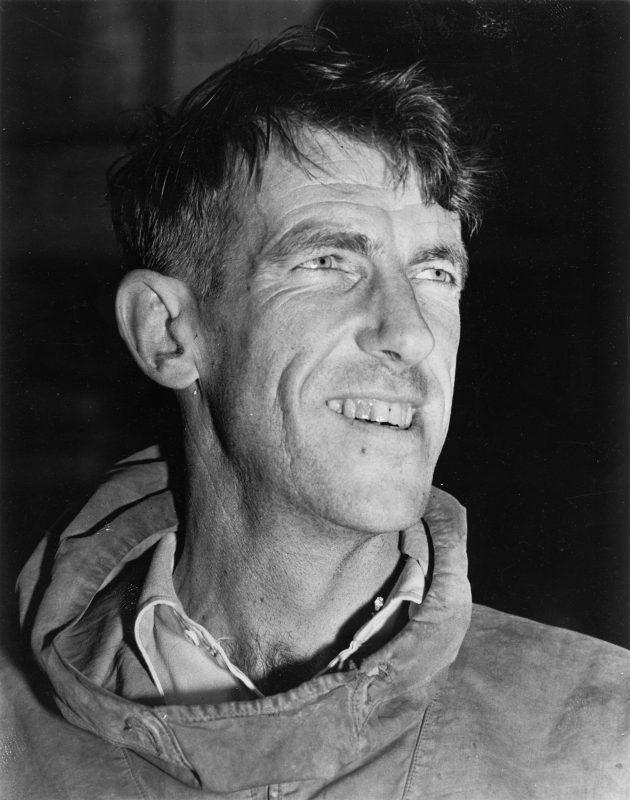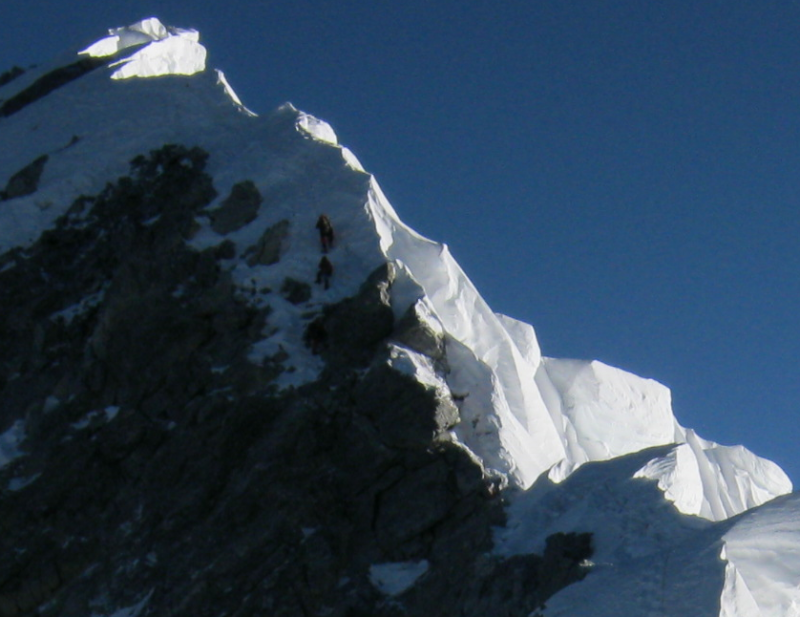History Changed: The Hillary Step Disappearance
Named after mountaineer Sir Edmund Hillary, the Hillary Step is, or possibly was, a 39-foot vertical rock face, situated on the southeast edge of Mount Everest. It is the last difficult piece of the climb up Mount Everest from the southeast side. While the step was a marker that meant the arduous climb up the mountain was nearing its end, there is a possibility that the well-known section of rock has been destroyed.
On April 25, 2015, a 7.8 earthquake hit Nepal, killing 8,964 and injuring 21,952. The devastation to the country was extreme. While millions were left homeless due to the destruction, a question had been brought up in the years following as to whether there had been any damage to Mount Everest, including the Hillary Step. Due to heavy snow, no one could confirm whether the rock face had been destroyed. Until recently.
The Mountain
Prior to the British reconnaissance expedition in 1921, there are no recorded ascents to the top of Mount Everest, so it is hard to say whether someone else had ever made it to the top before. The British made many attempts to reach the top of the mountain, which is the tallest summit in the world, pushing a little further each time.
One of the challenges is that the mountain sits between Tibet and Nepal, meaning the climbers would first need to gain entry into one of those countries before being able to attempt a climb. For a long time, the Tibetan side was closed, and the Nepalese side would only allow climbers in once a year. This meant that the British mountaineers could only attempt the summit annually.
As of 2016, the mountain has more than 200 corpses frozen upon its slopes. The mountain is not really challenging from a technical standpoint, but the weather is treacherous, altitude sickness is incredibly serious, and there are crevasses and other hazards throughout, creating a very difficult and life-threatening environment overall.
Original Discovery
In 1953, the British decided to send two separate teams up the Nepalese side of the mountain to try again to reach the summit. Since the Tibet route was closed by China at the time, their only option was to head up from Nepal. One team was made up of Tom Bourdillon and Charles Evans, and the second with Edmund Hillary and Tenzing Norgay. Bourdillon and Evans were unsuccessful following an oxygen system failure, forcing the team to turn around when only 300 feet from the summit.

Three days after the first group’s failure, following intense snow and wind, Hillary and Tenzing were set to make an attempt to reach the summit. On the morning of May 29, 1953, after unfreezing Hillary’s boots, the team made the final ascent. The final section was the rock face later to be known as the Hillary Step. It was here that Hillary had discovered that they could work their way to the summit within a crack between the rock and the ice. Hillary was the first recorded man to scale the step and reach the summit, and the step was named after him.
Legacy of the Step
Following the success of Hillary and Tenzing, many mountaineers have climbed the same ascent. It became known as the final challenge in the seemingly impossible journey to make it to the top of the highest peak in the world. The risk in climbing the step is that if the climber slips and falls, they will plummet 10,000 feet off the left side or 8,000 feet off the right, making it a potentially perilous section of rock.
There are now usually ropes fixed on the rock face, placed by the first climbers of the season for the next group to use. Another issue is that the step can bottle neck if too many people are attempting the ascent or descent at the same time, increasing the risk of falling off the edge. Only one person can be on it at a time.
Is it there or not?
Since the 2015 earthquake, there have been several questions over whether the step has disappeared, remained unchanged, or has been altered. The current status of the step has been up for debate. Some mountaineers, including Ang Tshering Sherpa, the president of the Nepal Mountaineering Association, claim that the step is merely covered in snow and hard to see. “It is only that a small portion of the rock is visible, the rest is under the snow.”
Whereas British mountaineer Tim Mosedale, who has ascended the mountain six times, said simply, “It’s gone….there’s not enough snow to cover what was a massive block.” Mosedale included photos in his claim, showing that the rock has changed.

Ultimately, climbers have confirmed that they cannot go over the step as they had in the past because of geological changes to it, forcing them to use a snow ridge to its right. The climb over the snow ridge is less perilous than the step itself, but it does cause an even larger bottle neck, which can be deadly for climbers who are low on oxygen and running out of time.
Does it Matter?
As the Hillary Step did not dissolve due to any obvious force and there is an alternate route currently, the question does get raised as to whether it even really matters. The step is, of course, small, especially when compared to the mountain itself.
But the Hillary Step is more than the last challenge on the mountain. It was the sign to climbers that they really were almost to the top, giving them a last burst of enthusiasm to reach their ultimate goal. Climbing the step was a badge of honor, the final test to prove your worth as a mountaineer.
The safety of the mountain summit is also at risk. Though there has been a high casualty rate generally, the rate has dropped dramatically in recent years. Without the step, climbers are forced to wait for hours to pass through, using up valuable time and oxygen. But if you would like to confirm whether it is there, the only sure way is to make the climb yourself.
If you have any comments then please drop us a message on our Outdoor Revival Facebook page
If you have a good story to tell or blog let us know about it on our FB page, we’re also happy for article or review submissions, we’d love to hear from you.
We live in a beautiful world, get out there and enjoy it. Outdoor Revival – Reconnecting us all with the Outdoors.





